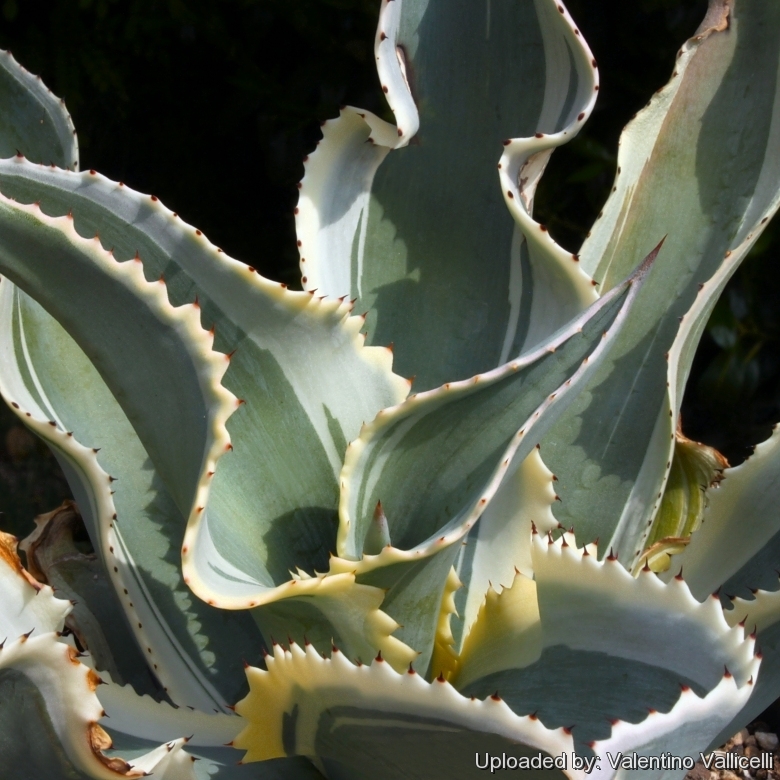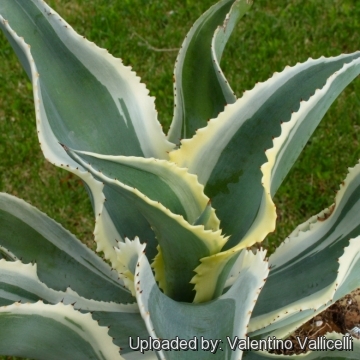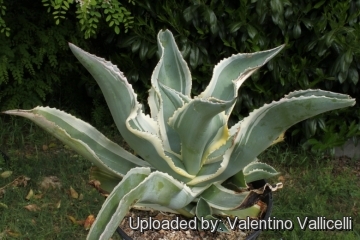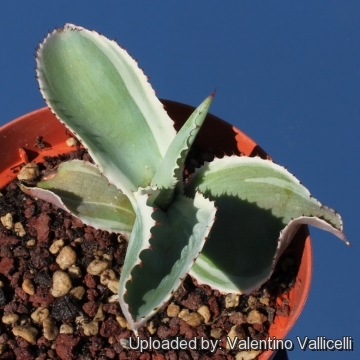Accepted Scientific Name: Agave gypsophila cv. Ivory Curls

Agave gypsophila f. marginata variegata (Agave gypsophila cv. Ivory Curls) Photo by: Valentino Vallicelli
it's one of the more attractive and user-friendly agaves with wavy turquoise leaves edged in ivory-cream.
Origin and Habitat: The 'Ivory Curls' is a nursery produced cultivar. It originated in Australia, South East Queensland at the nursery of well know plantsman Stan Walkley.
Synonyms:
See all synonyms of Agave gypsophila
back
Accepted name in llifle Database:Agave gypsophila GentryAgaves Cont. N. Amer. 510 (1982).
Cultivars
(2):
back
Description: It is an improved variegated form of Agave gypsophilaSN|277]]SN|505]] reaching a height and spread of 1m.
Unlike the more common agaves the striking thing about this plant is the wavy spined leaves
It is a smaller Agave and is typically solitary in habitat. But, the suckering ones are the forms most propagated and sold, obviously, as they are the easy ones to make more of. So most plants in captivity are prolific offsetters, despite that being a rare characteristic of this agave in the wild.
Leaves: Somewhat soft, like Agave attenuataSN|505]]SN|277]], blue-grey with an ivory edge when grown in full sun. If grown in the shade it will have a greenish tinge. The leaves are wavy, curling with soft marginal spines and there is a terminal spine at the tip of the leaf, but not as intimidating a terminal spine as many Agaves.
Flowers: In optimal conditions it will flower after 4-6 years with a panicle of golden flowers reaching 3-4 meters in height.
Subspecies, varieties, forms and cultivars of plants belonging to the Agave gypsophila group
 Agave gypsophila f. marginata variegata (Agave gypsophila cv. Ivory Curls) Photo by: Valentino Vallicelli
Agave gypsophila f. marginata variegata (Agave gypsophila cv. Ivory Curls) Photo by: Valentino Vallicelli Agave gypsophila f. marginata variegata (Agave gypsophila cv. Ivory Curls) Photo by: Valentino Vallicelli
Agave gypsophila f. marginata variegata (Agave gypsophila cv. Ivory Curls) Photo by: Valentino Vallicelli Agave gypsophila f. marginata variegata (Agave gypsophila cv. Ivory Curls) Photo by: Valentino Vallicelli
Agave gypsophila f. marginata variegata (Agave gypsophila cv. Ivory Curls) Photo by: Valentino Vallicelli Agave gypsophila f. marginata variegata (Agave gypsophila cv. Ivory Curls) Photo by: Valentino Vallicelli
Agave gypsophila f. marginata variegata (Agave gypsophila cv. Ivory Curls) Photo by: Valentino VallicelliCultivation and Propagation: This plant is frost tender and should be protected when overnight temperatures drop under 0 ° C. Frost disfigures the plant, although it may survive in much lower temperatures.
Like most agave it's a very good container plant. It's pretty slow growing and seems to like water more than most Agaves.















